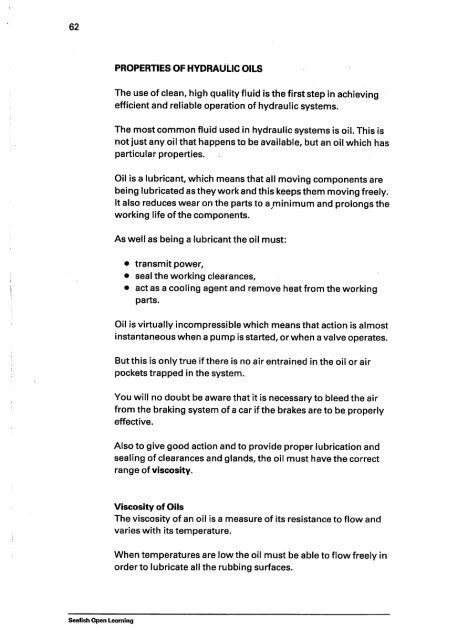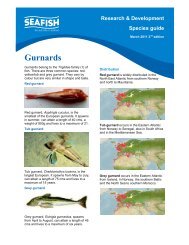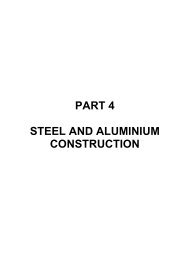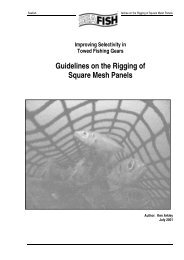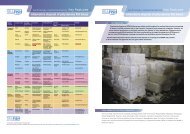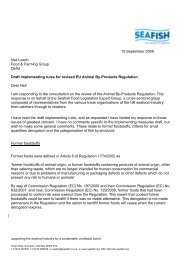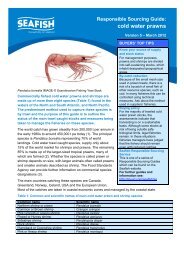Hydraulics - Seafish
Hydraulics - Seafish
Hydraulics - Seafish
Create successful ePaper yourself
Turn your PDF publications into a flip-book with our unique Google optimized e-Paper software.
62<br />
PROPERTIES OF HYDRAULIC OILS<br />
The use of clean, high quality fluid is the first step in achieving<br />
efficient and reliable operation of hydraulic systems.<br />
The most common fluid used in hydraulic systems is oil. This is<br />
not just any oil that happens to be available, but an oil which has<br />
particular properties.<br />
Oil is a lubricant, which means that all moving components are<br />
being lubricated as they work and this keeps them moving freely.<br />
It also reduces wear on the parts to a minimum and prolongs the<br />
working life of the components.<br />
As well as being a lubricant the oil must:<br />
• transmit power,<br />
• seal the working clearances,<br />
• act as a cooling agent and remove heat from the working<br />
parts.<br />
Oil is virtually incompressible which means that action is almost<br />
instantaneous when a pump is started, or when a valve operates.<br />
But this is only true if there is no air entrained in the oil or air<br />
pockets trapped in the system.<br />
You will no doubt be aware that it is necessary to bleed the air<br />
from the braking system of a car if the brakes are to be properly<br />
effective.<br />
Also to give good action and to provide proper lubrication and<br />
sealing of clearances and glands, the oil must have the correct<br />
range of viscosity.<br />
Viscosity of Oils<br />
The viscosity of an oil is a measure of its resistance to flow and<br />
varies with its temperature.<br />
When temperatures are low the oil<br />
order to lubricate all the rubbing surfaces.<br />
must be able to flow freely in<br />
Seaf ish Open Learning


